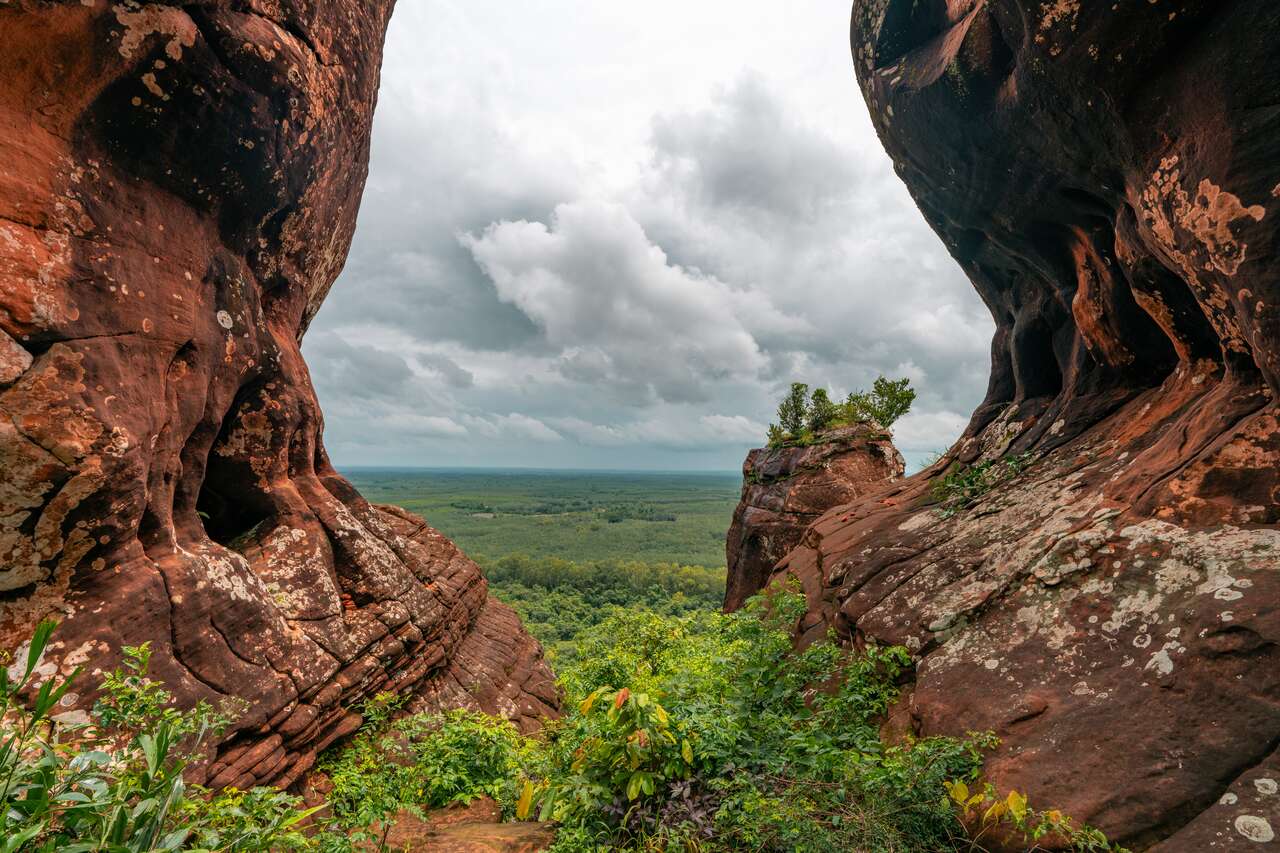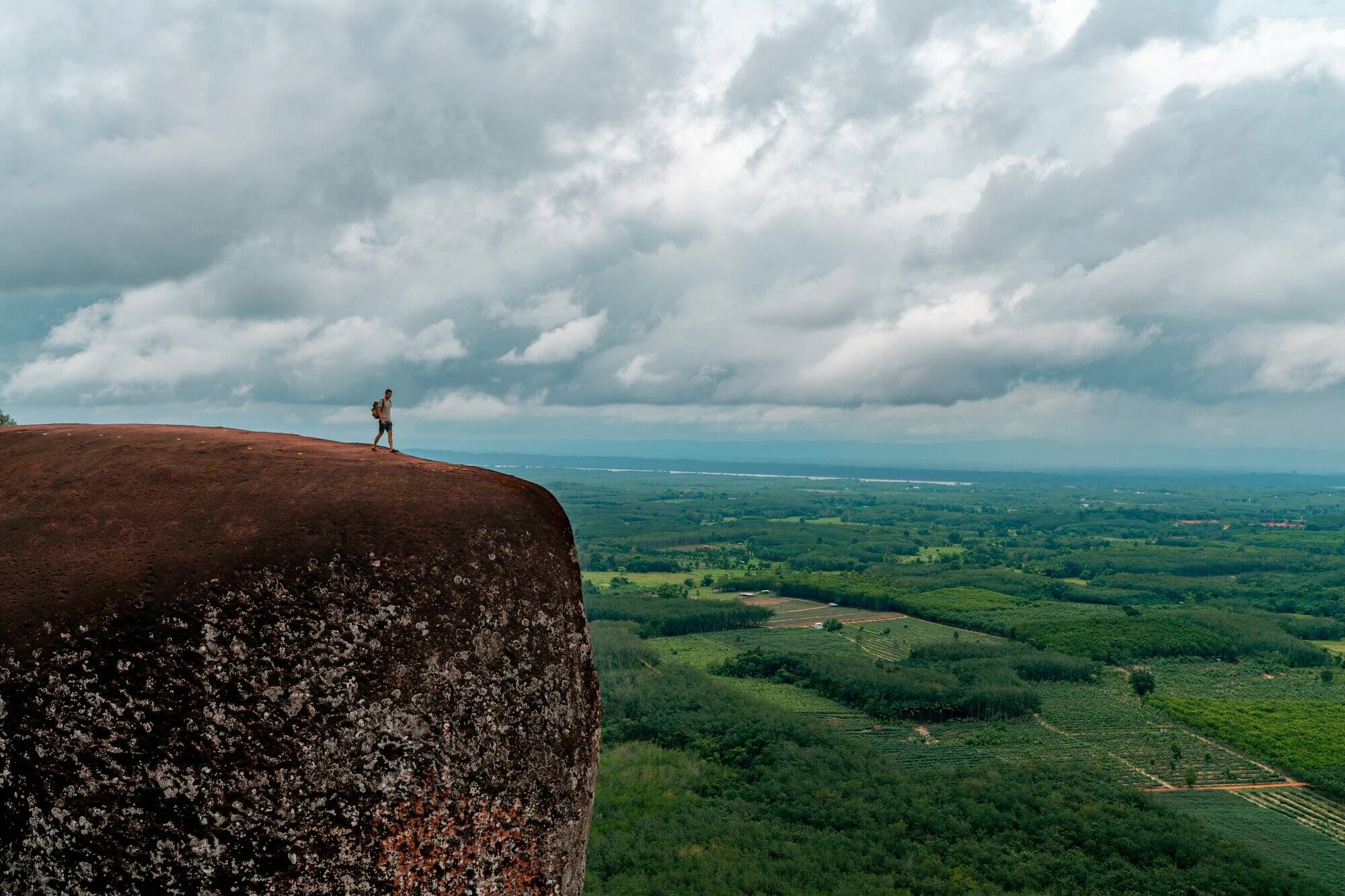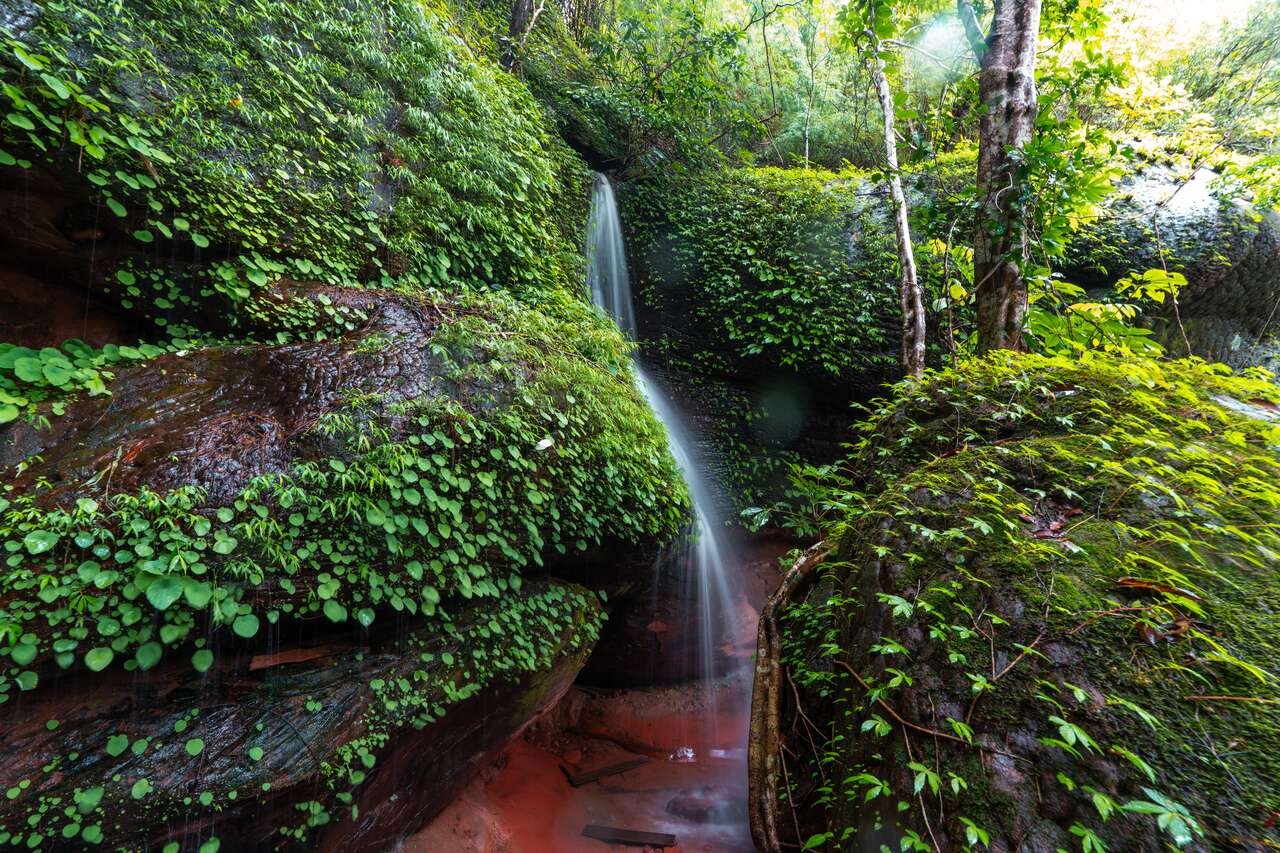In the far northeastern reaches of Thailand, where the Mekong River traces the border with Laos, lies Bueng Kan – the country’s youngest province and one of its most captivating secrets. Officially established in 2011, this quiet corner of Isaan offers something increasingly rare in modern travel: untouched landscapes, authentic culture, and the luxury of solitude. Far from Thailand’s crowded beaches and bustling cities, Bueng Kan enchants visitors with its surreal rock formations, forest temples, and riverside calm, making it a haven for those seeking adventure wrapped in serenity.
Bueng Kan is still largely off the mainstream tourist map, and that’s precisely what makes it special. The province’s terrain is defined by lush forests, cascading waterfalls, and dramatic sandstone cliffs that seem to rise out of nowhere. Life here flows at the rhythm of the Mekong – unhurried, graceful, and deeply connected to nature. While many travelers pass through Isaan on their way to Laos, those who linger in Bueng Kan find a landscape as wild as it is spiritual, where every sunrise feels like a personal discovery.

The province’s most famous landmark, Hin Sam Wan – or Three Whale Rocks – perfectly captures the essence of Bueng Kan’s natural mystique. Hidden within Phu Sing Forest Park, these colossal sandstone formations resemble a family of whales swimming through a sea of green jungle. At dawn, when soft mist curls through the trees and the first light paints the rocks in hues of amber and rose, the scene is nothing short of magical. Standing atop the “mother whale,” visitors can gaze across endless forests that stretch all the way to Laos. Getting there requires a bit of effort – a short hike or local truck ride from the park entrance – but the reward is one of the most breathtaking panoramas in all of northeastern Thailand.
Another crown jewel of Bueng Kan is Wat Phu Tok, officially known as Wat Jetiyakhiri. Rising dramatically from the flat plains, this sandstone mountain temple is a masterpiece of devotion and daring architecture. Seven levels of wooden staircases spiral around the mountain’s cliffs, symbolizing the seven stages of Buddhist enlightenment. Each step higher reveals new perspectives – of the surrounding jungle, of distant farmland, and of the delicate balance between faith and fear as you traverse the narrow walkways clinging to sheer rock faces. At the top, a quiet meditation hall invites visitors to pause, breathe, and reflect. Wat Phu Tok is both a spiritual and physical journey, one that rewards those willing to climb not just with views, but with a sense of inner stillness that’s rare in today’s world.
Bueng Kan’s natural wonders extend beyond its cliffs and temples. During the rainy season, the province transforms into a paradise of waterfalls and emerald landscapes. Tham Phra Waterfall, accessible by a tranquil boat ride, cascades down smooth rock layers surrounded by lush forest. Naka Cave, located in Phu Langka National Park, draws curious visitors with its eerie rock patterns resembling the scales of a giant serpent – said by locals to be the mythical naga, guardian of the Mekong. Other cascades like Tat Wimanthip, Tat Kinnaree, and Seven Colors Waterfall reveal the province’s vibrant beauty, each with its own legends and local lore.

For those seeking a cultural connection, Bueng Kan’s riverside temples and communities offer glimpses into traditional Isaan life. Wat Ahong Silawat, located at the narrowest point of the Mekong, stands above swirling waters believed to be bottomless. Local fishermen tell stories of mythical creatures inhabiting these depths, and during festivals, the temple comes alive with color, music, and faith. A visit to the nearby Bueng Kan Walking Street reveals another side of the province – where locals gather by the river to sell handmade crafts, grilled skewers, and sweet coconut desserts as the sun dips over Laos. It’s a peaceful, communal atmosphere that feels worlds away from Thailand’s more commercial night markets.

Reaching Bueng Kan adds to the sense of discovery. The province lies about 750 kilometers from Bangkok and roughly 130 kilometers northeast of Nong Khai. The easiest way to get there is by flying into Udon Thani, then taking a bus or private car for the scenic three-hour drive to Bueng Kan town. Once there, most travelers explore by renting a motorbike or arranging local transportation to reach remote attractions. Distances between sites can be long, but the rural roads pass through rice fields, rubber plantations, and small villages where smiles are abundant and English is rarely needed – only curiosity and kindness.

The best time to visit Bueng Kan is between November and February, when the weather is cool, dry, and perfect for hiking. During this season, the air is crisp and visibility clear, ideal for those early-morning trips to Hin Sam Wan or the wooden stairways of Wat Phu Tok. The rainy months from July to September have their own charm, cloaking the forests in rich greenery and reviving the waterfalls to their fullest glory. Visitors should come prepared with sturdy shoes, light clothing, and an adventurous spirit. Bueng Kan may not have five-star resorts or tourist infrastructure in abundance, but it compensates with something far more valuable: authenticity.

Bueng Kan embodies the Thailand that existed before the world discovered it – humble, spiritual, and intimately tied to the land. It’s a place where the clang of temple bells mingles with the murmur of the Mekong, where the scent of rain on red earth lingers long after the storm has passed, and where the line between myth and landscape blurs beautifully. To explore Bueng Kan is to experience a Thailand that still breathes in rhythm with nature, where silence speaks louder than noise, and where every path – whether up a cliff, through a forest, or along the river – leads you closer to something timeless.
For travelers searching for a journey less ordinary, Bueng Kan is a revelation. It’s not just a destination but a reminder that the most extraordinary places are often those still waiting to be found.




